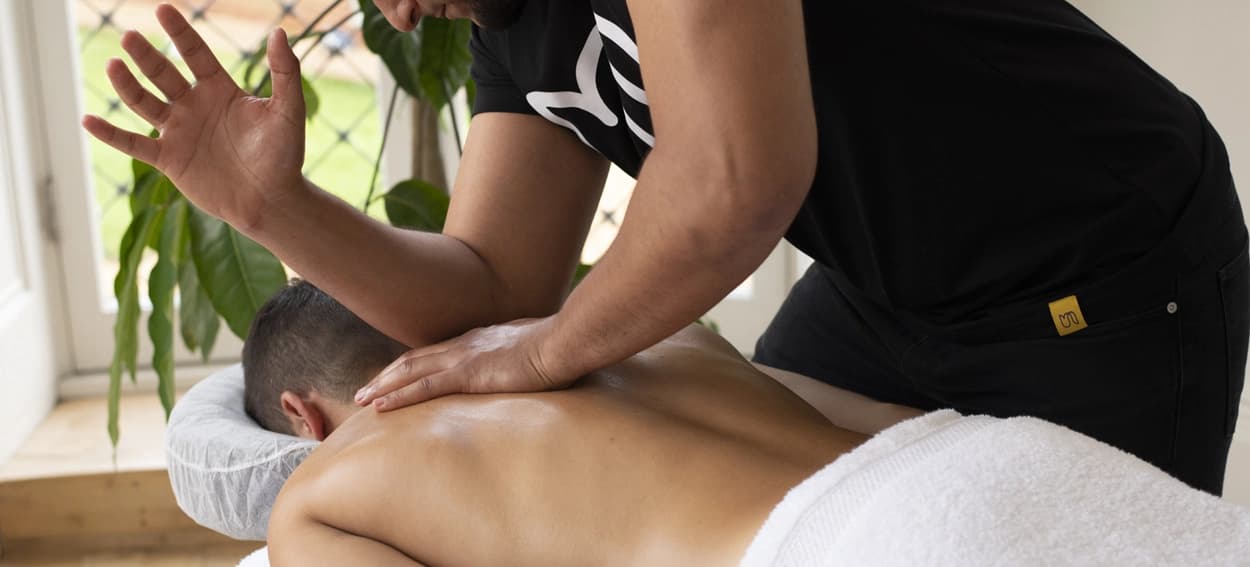Deep tissue massage pressure: What do you need?
You’ve heard of deep tissue massage and you know it’s something ‘nice’, but what is it and why do you need it?
If you’re the sort who likes to leave a massage session with your whole body feeling worked, deep tissue massage is a great way to do it. Of all the massage services, says Urban massage therapist Rob, deep tissue massage is brilliant for chronic pain, sports injuries and tight muscles.
It focuses on realigning your deeper layers of muscles and connective tissues. "Deep tissue massage therapy flushes out all the inflammation, lactic acid and toxins that build up in the muscles in our everyday lives,’ he says.
But just how deep should your massage therapist be going?
Some muscles can handle deep pressure better than others
The body parts that can take the pressure of a deep tissue massage are your legs, glutes, hips, shoulders and mid back. Sensitive areas like your neck, pecs and spine all need a lighter touch, says massage therapist Rob.
No aches or niggles? Go as firm as you like. Tell your massage therapist if you can handle a bit more or need less and they’ll adjust their massage techniques to you.
Stiff neck and upper back pain calls for trigger point work
Classic ‘desk neck’ calls for deep tissue massage and trigger point therapy, which is about increasing pressure on certain knots to release them.
Too much pressure on the neck under the wrong circumstances can increase pain post-massage, so your massage therapist will use careful pressure.
What massage therapy pressure is best for a bad back?
Urban pro Rob says musculoskeletal issues like back pain from poor posture is the number one thing he sees. "If the pain has been achy or stiff for a few weeks," he says, "most therapists will use more pressure during the deep tissue massage because the level of inflammation and irritability has probably decreased". But acute pain (like that resulting from sports injuries) needs lighter treatment in the specific spot, with firmer pressure applied to the rest of the body.
Soft tissue therapy is best for a trapped nerve
A trapped nerve needs soft tissue massage therapy to release surrounding tension. "Massaging the surrounding area will help realign the rest of the body," says Rob, "which takes pressure off the specific muscles and joints related to the injury." It may take two to three deep tissue massage sessions to release the trapped nerve.
Swedish massage vs. deep tissue massage
The main difference between deep tissue massage and Swedish massage is the amount of pressure used.
Deep tissue massage techniques will see your therapist using their elbows, fists and forearms to gradually increase pressure on your muscles. Deep tissue is an intense massage technique, working to break down scar tissue and ease muscle pain across the entire body.
Swedish massage typically uses less pressure than a deep tissue massage, with slow strokes to relax your whole nervous system. Your therapist will perform a full-body massage with long, flowing movements combined with kneading motions to tackle muscle knots and promote faster healing.
Both types of massage can have positive effects on overall muscle soreness, blood flow and mental health, it simply depends on your pressure preferences.
Take a look at the following table to compare massage treatments by pressure:
| Strong pressure | Medium pressure | Light pressure | Acupressure | Advanced techniques |
|---|---|---|---|---|
| Deep tissue massage | Swedish massage | Relaxing massage | Thai massage | Injury/pain management massage |
| Sports massage | Sports massage | Lymphatic drainage massage | Thai massage | |
| Sculpting massage | Energising massage | Pregnancy massage | Reflexology |
Everyone's massage pressure tolerance is different
If you've ever asked a friend for a massage and yelped in response to the intense pressure, this is something you'll already know.
The good news is your massage therapist will always ask you about your pressure preferences before your treatment begins and check in with you throughout.
Massage therapist Rob says that often clients might think they want a deep tissue massage until they feel the intensity of the techniques used. Don't feel shy about asking to try it first if you're unsure, your therapist can always adapt the treatment to incorporate other massage techniques that are more gentle.
